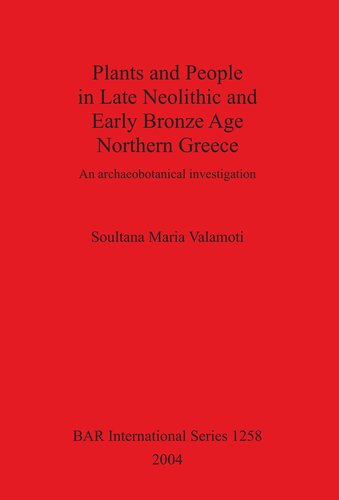

Most ebook files are in PDF format, so you can easily read them using various software such as Foxit Reader or directly on the Google Chrome browser.
Some ebook files are released by publishers in other formats such as .awz, .mobi, .epub, .fb2, etc. You may need to install specific software to read these formats on mobile/PC, such as Calibre.
Please read the tutorial at this link: https://ebookbell.com/faq
We offer FREE conversion to the popular formats you request; however, this may take some time. Therefore, right after payment, please email us, and we will try to provide the service as quickly as possible.
For some exceptional file formats or broken links (if any), please refrain from opening any disputes. Instead, email us first, and we will try to assist within a maximum of 6 hours.
EbookBell Team

5.0
20 reviewsThis book is based on new archaeobotanical data retrieved during the last fifteen years from prehistoric sites located in the regions of Macedonia and Thrace in northern Greece. More than two thousand samples from Late Neolithic and Early Bronze Age deposits from Makriyalos, Mandalo, Arkadikos, Dikili Tash and Marki form the basis for a consideration of prehistoric people-plant relationships in the region. The various sources contributing plant remains in the archaeobotanical assemblages are examined in order to address issues of intentional uses of plants and management of plant resources. The crops and plants harvested from the wild underline the variety in plant foods used during the Late Neolithic and Early Bronze Age in the region, at the same time pointing towards preferred staples and later crop introductions. The contribution of animal dung in the archaeobotanical assemblages is demonstrated by the assemblages considered by the book providing an insight into animal feeding and grazing patterns, revealing a variability in the strategies adopted among the archaeological sites considered, strategies that diverge from proposed models concerning animal husbandry in prehistoric Greece. The archaeobotanical data is also examined in relation to the current discussion on the co-existence of tells and extended sites in northern Greece and directions for future archaeobotanical research on the issue are pointed out.